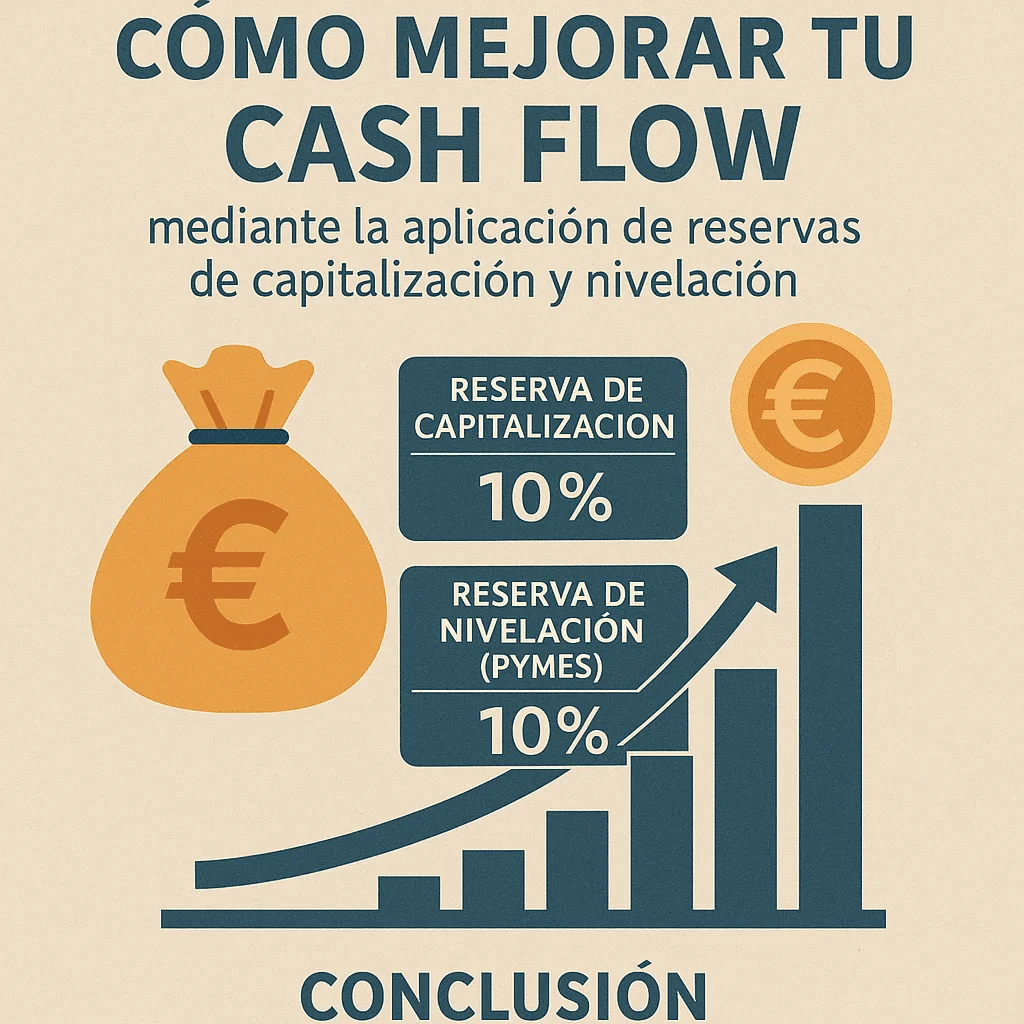Advantages of Creating a Holding Company as a Shareholder Entity
Creating a holding company as a shareholder offers very significant tax, asset, and management advantages.
Read more →
Cash flow management is one of the fundamental pillars of any business.
It’s not just about billing more, but about planning financial resources effectively to maintain liquidity, stability, and investment capacity.
In this context, the capitalization and equalization reserves provided for under Spanish tax law can be a highly valuable tool to improve liquidity without relying on external financing.
---
- Allows a reduction of the Corporate Income Tax base by up to 10% of undistributed profits.
- In exchange, the company must allocate a non-disposable reserve for the reduced amount and maintain it for five years.
- Direct benefit: lower tax burden and therefore greater available liquidity.
---
- Aimed at small and medium-sized enterprises (SMEs) with turnover below €10 million.
- Allows a reduction of the taxable base by up to 10%, with a maximum of €1 million.
- This reduction must be reversed within the following 5 fiscal years, offsetting possible negative taxable bases.
- Result: smooths taxation and creates a financial cushion for future loss-making periods.
---
Applying these reserves does not mean receiving cash immediately, but it does mean paying less tax now, thereby freeing up liquidity:
- Lower tax payments → more cash available for reinvestment, debt repayment, or working capital needs.
- In the case of the equalization reserve, it acts as an “advance tax saving” that protects against result volatility.
💡 In short, both reserves are tools for fiscal and financial optimization.
---
Let’s assume an SME with pre-tax profits of €300,000.
👉 This immediate tax saving improves cash flow without taking on debt or external financing.
---
1. Prior tax planning: assess whether your company meets the requirements and calculate the real impact on cash flow.
2. Strict accounting compliance: record the reserves in equity and maintain them for the required period.
3. Strategic vision: use the released liquidity for productive investment or to strengthen working capital.
4. Professional advice: incorrect application can result in adjustments and penalties.
---
The capitalization reserve and equalization reserve are tax instruments designed not only to encourage profit reinvestment but also to give companies greater financial flexibility.
When applied correctly, they can become a highly effective mechanism to:
✅ Improve cash flow.
✅ Reduce short-term tax pressure.
✅ Strengthen medium-term financial stability.
💼 In short, a smart tax planning strategy can become a direct source of business liquidity.